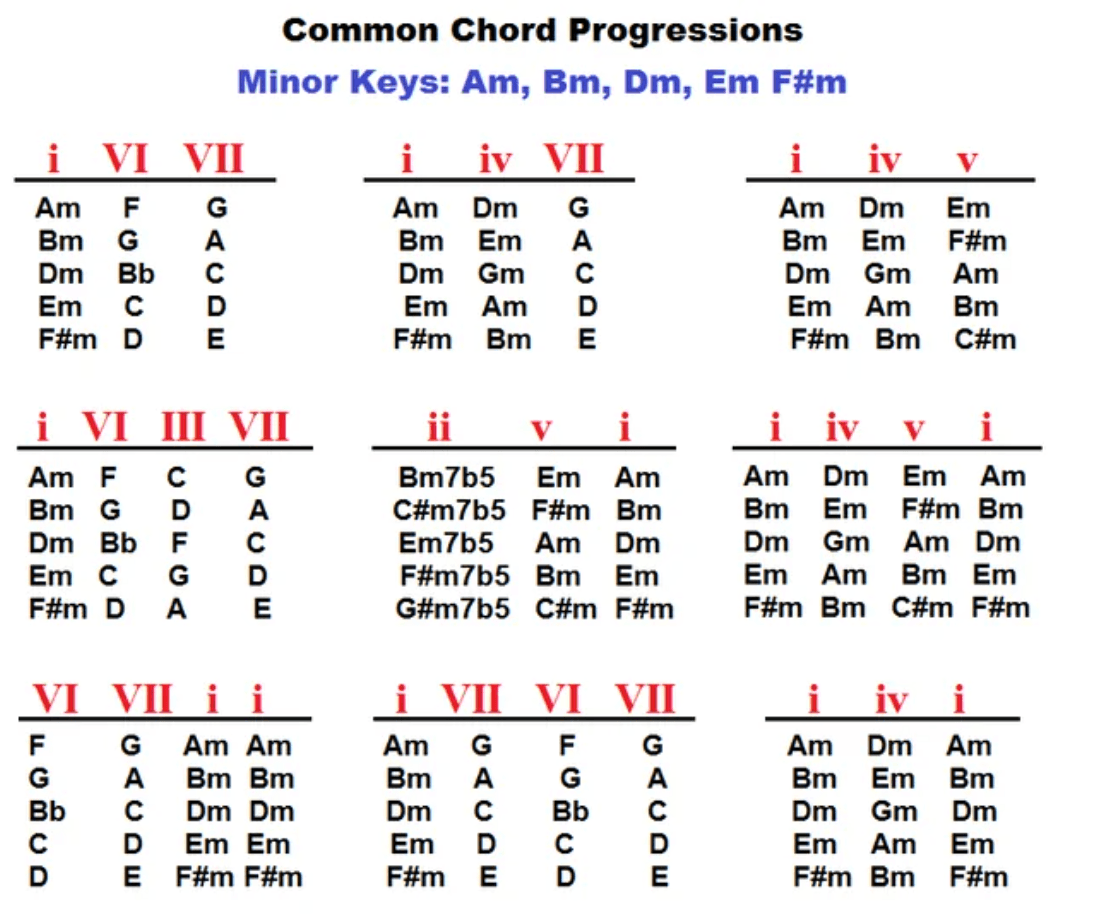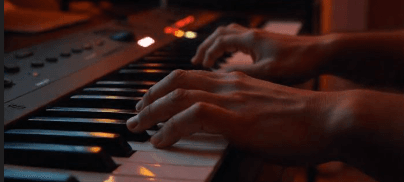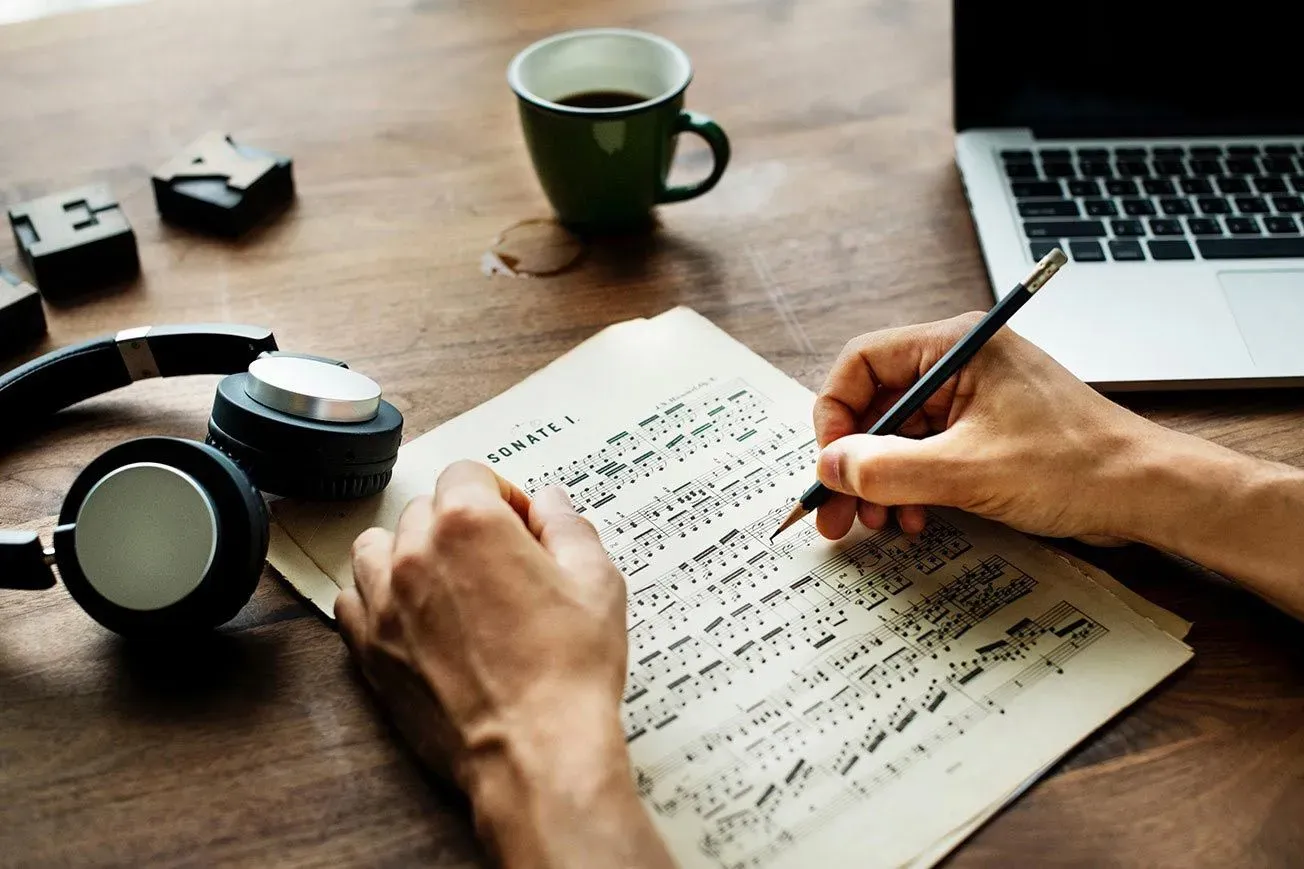So, you've got the lyrics, chords, and beat, but something's missing? Ah yes, the melody. Crafting the perfect melody is often the most complex aspect of songwriting.
But what if you had an AI melody generator to ease the process?
Stick around to discover how AI is reshaping the melody game.

Why Melodies Matter: The Heart of a Song
Let's get real: a song is like a puzzle, composed of lyrics, chords, structure, and melody.
Among these elements, the melody serves as the soul, tying everything into a cohesive, beautiful soundscape.
Mastering melody is both a scientific and artistic endeavor, requiring time, practice, and a deep understanding of its role, whether you're an experienced musician or just starting your creative journey.
What is a Melody?
A melody is a succession of musical tones grouped together as a single entity.
The pitch and duration of each note compose a melody, which can be either straightforward and brief or complex and extensive, particularly in genres like Jazz or orchestral pieces.
Melodies give a unique aural identity to a song, and without a strong one, your composition may lack memorability.
Why Is Melody So Crucial?
1. Emotional Impact: The melody often carries the emotional weight of a song. It can evoke feelings ranging from joy and excitement to sadness and nostalgia, depending on its tempo, pitch, and instrumentation.
2. Memorability: If people remember one thing about a song, it's usually the melody. It's what you hum or whistle, and it often sticks long after the song has ended.
3.Versatility: Melodies can be adapted into various arrangements. For example, the main melody of a song can be expressed vocally, instrumentally, or even as a ringtone for your phone.
4. Compatibility with Lyrics: A well-crafted melody can elevate the lyrics, making them more impactful and expressive. The right melody can turn good lyrics into great sound.
The Challenges in Crafting Melodies
Crafting an impeccable melody can be a challenging endeavor.
Although they may appear straightforward, melodies demand a nuanced grasp of musical theory, rhythm, and pacing.
Even the most experienced musicians spend hours in the lab, experimenting with different notes, chord progressions, and instruments to craft the perfect melody.
How AI Comes into Play: The Future of Melody Crafting
Artificial Intelligence is a game-changer in the world of audio production.
With an AI melody generator, you can take advantage of technology to create tunes efficiently and creatively.
While AI can't replace the human element in music, it's an excellent tool for generating inspiration and learning.
Why Consider Using an AI Melody Generator?
1. Quick Prototyping: An AI music tool can generate multiple personalized melody options in a fraction of the time it would take manually. It's like having a co-pilot in your creative journey.
2. Endless Inspiration: Facing a creative block? AI can generate a plethora of melody lines, chord progressions, and even complete songs to get your creative juices flowing again.
3. Educational Value: AI melody generators can also serve as a learning tool, helping you understand how different elements like pitch, tempo, and beat come together to form a cohesive melody.
What's In a Melody? More Than Just a Sequence of Notes
A melody is not just a random assortment of notes thrown together; it's a sequence of musical tones grouped as a single, coherent idea.
The pitch and duration of each note are critical components that bring your song to life.
In a world inundated with music—from pop and hip-hop to jazz and classical—understanding what makes a melody tick can set your compositions apart from the rest.
The Core Components: Pitch and Duration
Pitch: The height or depth of a note is its pitch. A melody will often move up and down in pitch to create a sense of movement and emotion. The scales you choose can significantly impact the mood of your composition.
Duration: This refers to how long each note is played. Variations in duration add rhythm to your melody, making it dynamic and engaging.
Together, pitch and duration interact to form the emotional core of your song, giving it its unique identity.
Genre-Specific Melodies: Pop, Rock, Jazz, and Opera
Different genres have their own rules and tendencies when it comes to melody construction:
Pop and Rock: In these genres, melodies tend to be simpler, often revolving around a catchy hook. This makes the song easily accessible and memorable for a broad audience.
Jazz: Jazz melodies can be highly complex, featuring intricate scales and off-beat rhythms. These melodies often serve as a foundation for improvisation.
Opera: In opera, the melody often takes on a storytelling role, carrying both emotional weight and narrative significance. Here, melodies can range from simple to complex but are always dramatic and expressive.
Melody Versus Harmony and Hooks: Clarifying the Confusion
It’s essential to distinguish a melody from harmonies and hooks:
Harmonies: These are the chords that accompany a melody, adding depth and complexity to the song. While they work in concert with the melody, they are not the melody itself.
Hooks: A hook is a musical idea, a passage, or phrase that is believed to be appealing and make the song stand out. Hooks are crucial for pop music, but they are not synonymous with melody. A hook can be a rhythmic pattern, a riff, a catchy chorus, or even a striking lyric.
The Timeless Nature of a Strong Melody
Regardless of genre or complexity, a well-crafted melody is timeless.
Whether it's the haunting notes of an old jazz standard or the infectious tune of a contemporary pop hit, a strong melody transcends time and medium.
Understanding the nuances of melody creation can give your audio production efforts a significant advantage, allowing you to craft songs that resonate on a deep, emotional level.
9 Game-Changing AI Melody Generators in 2023
The emergence of artificial intelligence has revolutionized various industries, including music.
Nowadays, composers and producers have access to a wide array of AI-powered tools that aid not just in sound production but also in inventive melody crafting.
Whether you're a beginner or a seasoned professional, these nine AI melody generators promise to elevate your musical endeavors in 2023.
1. Empress Melody Mind: The Versatile Powerhouse
Melody Mind is your virtual creative lab, providing options to input your instrument, chords, genre, and bpm.
This is perfect for those who like to experiment and wish to have a toolbox that is as versatile as their musical tastes.
2. SoundRaw: A Symphony of Features
When you're after top-notch quality, SoundRaw is the go-to audio AI tool.
With full control over mood, genre, and length, you can craft a melody that fits your specific needs like a well-tuned instrument.
3. Soundful: Beyond Just Music
Tailored for content creators, Soundful is more than just a melody generator.
Offering licensed music for vlogs, podcasts, and more, this tool serves as a one-stop-shop for all your audio production requirements.
4. Amper Music: Shutterstock's Gem
Backed by Shutterstock, Amper Music is a colossus in the AI music landscape.
With a plethora of premade song choices and a robust API, this is the tool for those who want a comprehensive suite for melody creation and more.
5. DopeLoop: The Mobile Maestro
If you're the kind of creator who's always on the move, DopeLoop has got you covered.
This AI tool allows you to generate melodies right from your phone, giving you the freedom to be musically creative wherever you are.
6. Melisma Stochastic Melody Generator: For the Theorists
For those who have a deep understanding of music theory, Melisma Stochastic Melody Generator offers unparalleled customization.
This allows for more complex compositions, suiting those who are looking to push the boundaries of conventional melody structures.
7. SoundGrail Melody Generator: Precision Meets Ease
Ease of use doesn't have to compromise quality.
SoundGrail Melody Generator delivers precision, with features like rhyming functionality that make it an excellent choice for those who want to quickly churn out high-quality melodies.
8. Ecrett Music: Quality and Variety
Offering a balance between preset options and customization features, Ecrett Music provides both quality and variety.
Whether you want to stick to a template or venture into more experimental territories, this tool accommodates your creative needs.
9. MuseNet: The Multi-Instrumentalist
Last but not least, MuseNet utilizes GPT-2 technology to predict the next note quickly.
This tool is your go-to for multi-instrument compositions, allowing for a richer, more layered audio experience.
Your Musical Imagination, Amplified by AI
Whether you're a music industry veteran or a content creator looking to spice up your audio productions, these nine AI melody generators offer something for everyone.
Don't just stick to conventional methods; experiment and explore these AI tools to unlock new creative potential in 2023.

Generating Meaningful and Catchy Melodies
Crafting a melody is akin to constructing a detailed work of art using musical notes; every note contributes to the song's emotional richness.
Though songwriting can appear intimidating, there are actionable methods to brainstorm melodies that can deeply connect with your audience.
Let’s delve into some techniques that can help you shape your musical ideas into something unforgettable.
Generate Your Melody Using Chord Progressions
In the beginning, the melody you are working on might not sound as you'd hoped.
It could even resemble another song, especially if another tune was lingering in your head beforehand.
A neat trick to get past this is to vocalize or play indistinct sounds or gibberish over your chords—think "la, la, la's" or "dum dee dums."
This helps you freely explore musical ideas without the constraint of lyrics. Over time, these vocal experiments will morph into a melody uniquely yours. For instance, the opening melody of Jordin Sparks' "One Step At A Time" employs this technique effectively.
Pattern Your Notes in a Stepwise Fashion
Think of melody creation like ascending or descending a staircase; each step, or note, has its own place and rhythm.
For a compelling melody, consider patterning your notes in a stepwise fashion, then introduce variations such as extended steps or leaps.
This approach works particularly well with slow-beat songs, where you can manipulate long-paced notes interspersed with short, rhythmic jumps.
Work Towards Creating the Hook
A hook is often the most memorable part of a song, encapsulating its core melody.
If you're able to conceive a hook based on your song's theme or even by humming over a beat, you're simultaneously crafting your melody.
This method might come easier to some songwriters, offering a way to create a melody organically.
Shape Your Melody into the Harmony
The overall harmony of a song provides a contextual framework within which a melody can shine.
While developing your melody, consider how it will blend with the harmonies, the instruments, and even the vocal arrangements.
This holistic approach will help you fine-tune your melody to stand out where it matters most in your song.
Place Emphasis on a Rhythm Pattern
If your melody is in place but still lacking a spark, changing the rhythm pattern can dramatically alter its impact.
Don't hesitate to move notes around the beat or even play with the time signature.
Such experimentation can bring a previously dull melody to life, offering unexpected emotional depth or excitement.
Take Cues from Popular Songs
Often, you can find inspiration from existing songs across genres.
Whether you're into pop, jazz, or rock, listen attentively to melodies that catch your ear.
You might find certain chord progressions or rhythmic patterns that you can adapt to fit your own creative vision.
Get Inspiration from the Song’s Emotional Theme
The emotional undertone of your song can guide your melody crafting process.
For example, a lively song might benefit from an equally spirited melody, while a melancholic tune would be better suited for a more subdued melody.
The emotional theme will dictate the musical elements you incorporate into your melody.
The Art and Science of Crafting Melodies
Crafting meaningful and catchy melodies often requires both inspiration and methodical experimentation.
The tips outlined above provide a roadmap to navigate the challenging yet rewarding journey of melody creation.
Whether you're a novice songwriter or a seasoned composer, these strategies can help you develop melodies that resonate deeply with your audience.
3 Songs That Are Generated Using AI Music Tools
As we delve into the brave new world of AI-generated music, there's an increasing fascination with how artificial intelligence impacts the creative process.
Here, we highlight three songs that beautifully exemplify the synergy between human ingenuity and AI assistance.
These songs, hailing from different genres and backgrounds, serve as striking examples of this co-creative power.
1. Break Free – Taryn Southern
Break Free is not just another song on the radio; it’s a testament to the fusion of human creativity and AI capabilities.
Released in 2017 by American singer-songwriter Taryn Southern, the song gained widespread attention for its unique production process.
Taryn teamed up with Amper Music, an AI platform designed to compose music using machine learning algorithms.
Taryn provided the lyrics and melody while Amper's AI took care of the composition, arrangement, and even production elements.
Taryn Southern’s musical vision was amplified through AI-assisted composition, making the song a milestone in the journey of AI in music.
2. Daddy’s Car – Sony CSL Research Lab
If you’re a Beatles fan, you'll find Daddy’s Car captivating for its eerily familiar sound.
Produced by Sony Computer Science Laboratory (CSL) Research Lab in 2016, this song was composed entirely by an AI system called FlowMachines.
FlowMachines analyzes a massive database of existing songs to learn the musical patterns embedded within them.
For Daddy’s Car, it was trained specifically on a dataset of Beatles compositions.
The goal was to capture the essence of the iconic band, and the result did just that.
The lyrics were penned by human collaborator Benoit Carré, and the entire piece was performed by human musicians, making it a symbiotic blend of AI intelligence and human artistry.
3. World is Mine – Supercell feat. Hatsune Miku
World is Mine shattered boundaries by featuring Hatsune Miku, a virtual pop star, as its vocalist.
Released in 2008 by Japanese music group Supercell, the song quickly gained fame for its groundbreaking use of Vocaloid technology by Yamaha Corporation.
The song was penned and composed by Ryo, Supercell's founder, who is renowned for his emotionally resonant lyrics and melodies. Hatsune Miku, a virtual character, sang the song, rendering it with a unique vocal quality that only a Vocaloid could provide.
This song doesn’t just represent a blend of human and AI creativity; it also explores the limits of what we consider to be a 'performer', making us question the very nature of music and artistry in the age of AI.
The Future is Here
AI music tools are no longer a future concept; they are very much a part of today's creative landscape.
Whether it's refining melodies, exploring new styles, or even crafting entire songs, these AI tools are amplifying human creativity in unprecedented ways.
These three songs showcase the limitless possibilities that open up when man and machine collaborate, heralding an exciting new era in music production.
The Empress Experience: Elevate Your Music Today!
Your search for an AI melody generator ends with Empress.
With Empress, not only can you generate melodies, but you also have access to lyric-writing tools, DJ set lists, and even marketing aids like YouTube descriptions and SEO tags.
Click here to unlock your creative potential with Empress.
FAQs: AI Melody Generator
Q1: Is an AI-generated melody royalty-free?
This depends on the terms of the AI music tool you're using. Always read the licensing agreement to confirm.
Q2: How does AI understand musical theory?
AI uses machine learning algorithms to analyze existing musical compositions and understand their underlying patterns and structures.
Q3: Can I integrate AI music tools with my DAW?
Some AI music tools offer API or plugin options for DAW integration, but compatibility varies among different platforms.
Q4: How customizable are AI-generated melodies?
Customizability varies; some tools allow you to input instruments, chords, and BPM, while others offer fewer options.
Q5: What file formats do these AI melody generators support?
Most AI melody generators support common audio file formats like MP3, WAV, and MIDI, but always check the specific tool for details.
Follow the future of music with Empress. Check out our blog to learn how you can effectively use these AI music tools.


